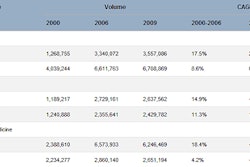Referral rates from primary care physicians to specialists in the U.S. doubled between 1999 and 2009, according to a new study published online January 23 in the Archives of Internal Medicine.
For many years, the rates of physician referrals stayed flat, until about 10 years ago when they began a steady climb, according to researchers at Harvard Medical School. They found that over this 10-year time period, there was a 92% increase in referral rates, from 4.8% to 9.3% (Arch Intern Med, January 23, 2012, Vol. 172:2, pp. 163-170).
Lead author Dr. Michael Barnett, a first-year resident in internal medicine and primary care at Brigham and Women's Hospital, and senior author Bruce Landon, professor of healthcare policy at Harvard Medical School, analyzed a representative sample of 845,243 ambulatory patient visits from the National Ambulatory Medical Care Surveys from 1993 to 2009.
Their analysis found that the estimated absolute number of visits resulting in a referral increased 159%, from 40.6 million to 105 million during the time frame included in the study.
The increase in referral rates coincides with an increase in chronic conditions such as type 2 diabetes, but referrals to specialists are often just the beginning of a series of potentially costly services that may or may not be needed, Barnett and Landon noted.
The marked increase in referral rates is likely due to increased specialization in medical care, and increasing responsibilities for primary care physicians during a typical visit, the authors wrote. But in many cases, a more conservative approach can have better results and lower costs.
"This study is step one, an attempt to start to get our heads around the question by describing the basic epidemiology of physician referrals," Landon said in a statement released by Harvard Medical School.



















